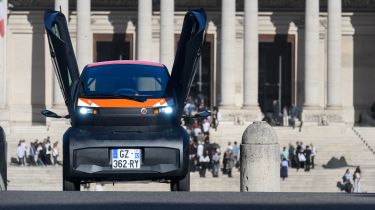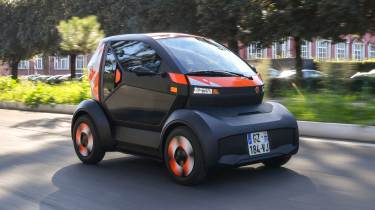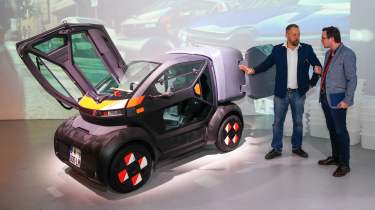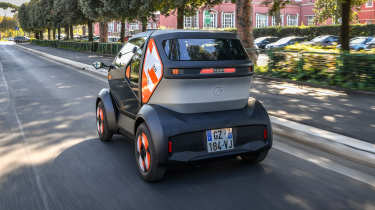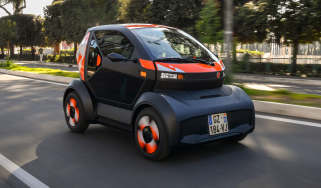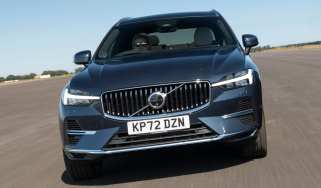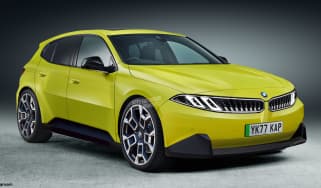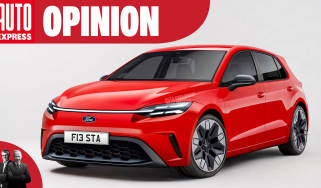What is MaaS? Mobility as a Service and the future of car use
We look at the pros and cons of Mobility as a Service, and the vehicles set to help change the face of car ownership
What it means to be a motorist is changing fundamentally. For starters, the types of car we drive are vastly different to those we did 20 years ago in terms of both proportion and powertrain; modern family car buyers, for example, are now choosing high-riding SUVs over hatchbacks, and we’re slowly being encouraged to switch from our polluting petrol and diesel cars to more climate-friendly EVs.
But it’s not only the vehicles themselves that are changing; the whole car-ownership landscape may look rather different in 10 or 20 years. Mobility as a Service (MaaS) has been earmarked as something that could potentially bring about the end of car ownership as we know it for many people.
MaaS is defined as a ‘digital interface to source and manage the provision of a transport-related service(s), which meets the mobility requirements of a customer’. That might sound a bit confusing, but essentially MaaS allows drivers to purchase ‘mobility’, rather than a means of transport itself.
Think of it like this: 25 years ago people used to go into Woolworths or HMV to buy a VHS tape or DVD. Nowadays, most either digitally rent their films or sign up to a subscription service such as Netflix or Disney+ so they can watch whatever they want, whenever they want to. The key factor is, while in the past access to certain products was more tightly controlled, today’s market has opened up so you have more freedom to buy in services.
This concept is exactly what could be coming to the automotive industry. While drivers have historically had to fork out large sums of money to purchase a vehicle to get around, new car-sharing services are beginning to spring up around the globe, and these allow you to rent a model for a single journey at the tap of a touchscreen.
We should make it clear that when we say ‘car-sharing’, we don’t mean ‘carpooling’, using apps such as Hiyacar and Zipcar that allow you, as an individual, to rent a car by the hour. Logging onto any of these services will show you vehicles in the local area that you can walk straight up to, unlock using your phone and drive away.
While car-sharing might sound convoluted – why would you want to have to go through the tedium of finding and renting a vehicle, when owning one means you can drive it anywhere, anytime – this kind of system does have its benefits. In fact, it already exists and is thriving in the UK via e-scooter rental apps.
For starters, it’s perceived as a much better environmental option. Cars remain one of the planet’s greatest greenhouse-gas emitters, so the entire concept of sharing centres on the fact that fewer vehicles on the road equals less pollution.
Research also shows that people who decide to make use of car-sharing services are much more likely to delay or even reduce car ownership. A 2014 study in Paris showed that such users reduced their ownership by 23 per cent. A more recent investigation in 2020 by the International Institute of Industrial Environmental Economics at Lund University, Sweden, found that across Europe between 14.3 and 40 per cent of people gave up their personal cars after gaining access to sharing schemes.
In fairness, there are negatives to this type of service, too; a study in South Korea found the presence of car-sharing programmes actually led people away from even more eco-friendly means of mobility such as walking, cycling and public transport, and into individual vehicles, thus increasing emissions overall.
This raises a further point: why the need for car-sharing schemes when public transport already exists? Well, we can use the UK as a case study for how unreliable public transport can be, so this type of service can only help to bolster the available mobility offerings. It’s also worth noting that many may be willing to forego vehicle ownership, but won’t want to give up the personal space it provides – something car-sharing can fulfil.
Regardless, depending on the type of vehicle used, car-sharing schemes can still result in a large reduction in an individual’s carbon footprint. UK transport charity CoMoUK conducted research in 2021 that found the average vehicle operating under a car club or car-sharing platform emits 27 per cent less CO2 than the equivalent privately owned vehicle – primarily due to the fact that it is typically newer and electrified.
This is backed up by research from Finland’s University of Oulu, which found that if car-sharing firms upgraded their fleets to low and zero-emissions vehicles, the amount of carbon being pumped into the atmosphere by their line-up could be slashed by as much as 31 per cent.
Ultimately, not everyone can afford to buy a new electric car – the majority of models start from over £30,000 – nor does everyone have somewhere they can park it, especially in busy cities. With this in mind, car and ride-sharing services and subscriptions can be an incredibly appealing alternative. Manufacturers are starting to cotton on to this, with a raft of new, cheap EVs now entering the market, all designed with an eye on city mobility and car-sharing fleets.
Few vehicles fit this brief on paper better than the Mobilize Duo. It may not be the first vehicle from Renault Group’s mobility-oriented sub-brand, but it is the first to be sold in the UK. Mobilize has been operating since 2021, and it already has partnerships that offer several car-sharing services across Europe – including in France, Belgium and Spain.
Speaking to Auto Express, Mobilize’s mobility business director Léo Brouette said the firm is “studying the potential to bring a car-sharing scheme to the UK – but it depends on a lot of factors”. He was, however, clear about how working with such programmes is “one of Mobilize’s main missions”, with the Duo boasting a raft of features aimed at fleet operators.
Most notably, the Duo is equipped with geofencing tech as standard. Utilising GPS data, this allows fleet operators to control the exact boundaries and streets in which the vehicle will work; if the car is driven out of bounds, it’ll alert the fleet operators and can be prevented from being switched off, forcing the user to drive on.
Unlike fellow quadricycle the Citroen Ami, which uses an old-school key, the Duo can be unlocked and started using your mobile phone. Mobilize says the vehicle communicates with your device via Bluetooth, so the system can even work in underground car parks.
This means users of car-sharing services can pay for a ride via the appropriate app or website, download the digital key to their phone and then simply walk up and unlock the Duo without having to go to a central office to pick up a set of physical keys. Small quadricycles such as the Duo and Ami lend themselves to car-sharing because such schemes typically suit short journeys across towns and cities. And given that these kinds of vehicles take up much less space than a traditional car, their use could further help ease city congestion.
François Laurent, chief engineer at Mobilize, told us “the Duo’s tandem architecture is not a limitation. It keeps the car compact and easy to park”. In fact, Mobilize says you can fit three of the vehicles in a single car-parking space.
That’s not all, because some quadricycle models – including the Ami and certain versions of the Duo – can be driven in Europe from the age of 14, without the need for a driver’s licence. This greatly expands the available customer base.
We should also mention the end-to-end environmental impact of this type of vehicle. Once again using the Duo as an example, manufacturing Mobilize’s quadricycle produces 66 per cent fewer CO2 emissions than an equivalent electric city car such as the Fiat 500e, Dacia Spring, Hyundai Inster and so on. Small quadricycles are also much cheaper and easier to repair than a standard car – the Duo’s front and rear bumpers are identical and 100 per cent recyclable, as are the Ami’s left and right doors.
Fundamentally, Mobility as a Service solutions such as car-sharing won’t work for everyone; walking around to find an available vehicle in a densely populated city is much easier than doing so out in the countryside. But that’s not to undermine the potential these types of schemes have to change the automotive landscape.
Car financing and ownership won’t go away anytime soon, but sharing services are already permeating into the UK, and it’s only a matter of time before drivers will be confronted with a wide and accessible selection of affordable rides. These will ultimately come courtesy of makers that have long focused on building cars for the consumer, but are now eyeing up a whole new market – giving rise to a fresh generation of vehicles and mobility options.
What's the DUO like to drive?
Unlock the Duo with your phone, snap it into the cradle on the dashboard and you’re ready to drive. With just 16bhp available, the Duo is no sports car, but it gets up to 30mph without much fuss – which is more than you could say about some of its rivals.
A tight 6.8-metre turning circle means it’s certainly nimble – even despite the lack of power steering. The McLaren Senna-style glass doors make it easy to see what’s going on around you, which is ideal in busy cities where cars and pedestrians alike can easily swarm you. On top models there are even parking sensors – ideal because if you’re carrying a passenger, there’s no way to see behind you.
It’s not all great, though. There’s very little sound insulation, meaning you can very much hear the electric motor, as well as the outside world going on around you. And then there’s the manual handbrake (there’s no hillstart assist), which is placed so far ahead in the cabin that you have to lean well forward in order to disengage it – not ideal when setting off at the lights.
Need to get around in the city? Read our guide to the best small cars to buy now...
Find a car with the experts

